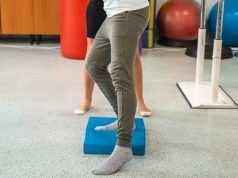Small reductions in pain-related disability at three months for multidisciplinary biopsychosocial intervention, individualized postural therapy
By Elana Gotkine HealthDay Reporter
FRIDAY, Dec. 30, 2022 (HealthDay News) — A multidisciplinary biopsychosocial intervention or an individualized postural therapy (IPT) intervention can reduce pain-related disability at three months compared with usual care among patients with acute or subacute spine pain, according to a study published in the Dec. 20 issue of the Journal of the American Medical Association.
Niteesh K. Choudhry, M.D., Ph.D., from Brigham and Women’s Hospital in Boston, and colleagues examined the effects of noninvasive care for spine pain among participants with neck or back pain of three months’ duration or less from 33 U.S. centers. Participants were randomly assigned to one of the following: (1) usual care; (2) a risk-stratified, multidisciplinary intervention (the identify, coordinate, and enhance [ICE] care model) combining physical therapy, health coach counseling, and consultation from a specialist in pain medicine or rehabilitation; or (3) IPT, combining physical therapy with building self-efficacy and self-management (992, 829, and 1,150 participants, respectively).
The researchers found that the mean Oswestry Disability Index scores changed from 31.2 to 15.4 for ICE, from 29.3 to 15.4 for IPT, and from 28.9 to 19.5 for usual care between baseline and three-month follow-up, with absolute differences of â5.8 and â4.3 for ICE and IPT, respectively, compared with usual care. In the ICE, IPT, and usual care groups, the mean 12-month spending was $1,448, $2,528, and $1,587, respectively, with differences of â$139 and $941 for ICE and IPT, respectively, compared with usual care (risk ratios, 0.93 and 1.40, respectively).
“Clinicians should more often recommend structured exercise programs for subacute back or neck pain, especially when the pain is recurrent,” write the authors of an accompanying editorial.
Several authors disclosed financial ties to the health care industry.
Abstract/Full Text (subscription or payment may be required)
Editorial (subscription or payment may be required)
Copyright © 2022 HealthDay. All rights reserved.








